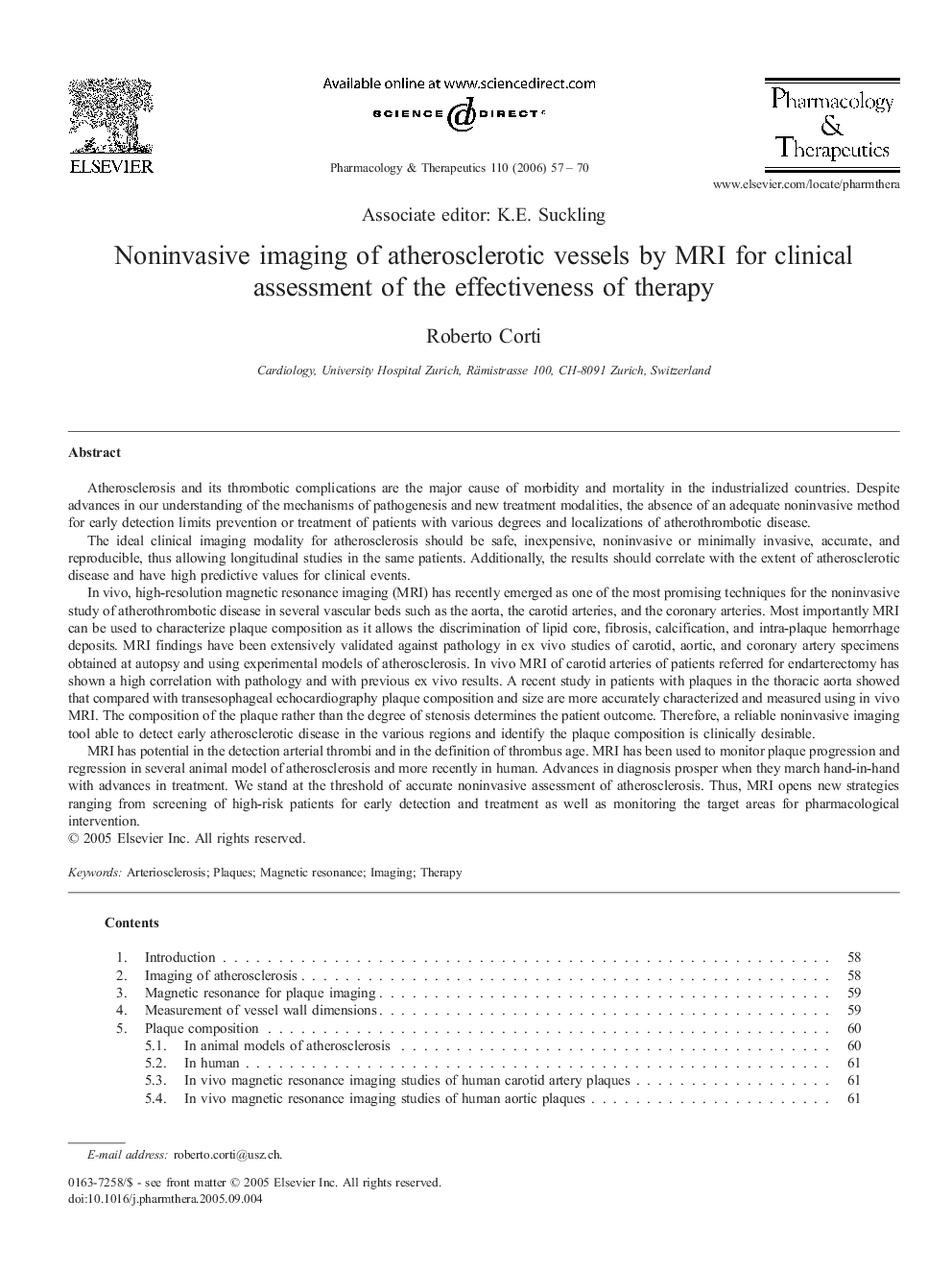| کد مقاله | کد نشریه | سال انتشار | مقاله انگلیسی | نسخه تمام متن |
|---|---|---|---|---|
| 2564342 | 1127645 | 2006 | 14 صفحه PDF | دانلود رایگان |

Atherosclerosis and its thrombotic complications are the major cause of morbidity and mortality in the industrialized countries. Despite advances in our understanding of the mechanisms of pathogenesis and new treatment modalities, the absence of an adequate noninvasive method for early detection limits prevention or treatment of patients with various degrees and localizations of atherothrombotic disease.The ideal clinical imaging modality for atherosclerosis should be safe, inexpensive, noninvasive or minimally invasive, accurate, and reproducible, thus allowing longitudinal studies in the same patients. Additionally, the results should correlate with the extent of atherosclerotic disease and have high predictive values for clinical events.In vivo, high-resolution magnetic resonance imaging (MRI) has recently emerged as one of the most promising techniques for the noninvasive study of atherothrombotic disease in several vascular beds such as the aorta, the carotid arteries, and the coronary arteries. Most importantly MRI can be used to characterize plaque composition as it allows the discrimination of lipid core, fibrosis, calcification, and intra-plaque hemorrhage deposits. MRI findings have been extensively validated against pathology in ex vivo studies of carotid, aortic, and coronary artery specimens obtained at autopsy and using experimental models of atherosclerosis. In vivo MRI of carotid arteries of patients referred for endarterectomy has shown a high correlation with pathology and with previous ex vivo results. A recent study in patients with plaques in the thoracic aorta showed that compared with transesophageal echocardiography plaque composition and size are more accurately characterized and measured using in vivo MRI. The composition of the plaque rather than the degree of stenosis determines the patient outcome. Therefore, a reliable noninvasive imaging tool able to detect early atherosclerotic disease in the various regions and identify the plaque composition is clinically desirable.MRI has potential in the detection arterial thrombi and in the definition of thrombus age. MRI has been used to monitor plaque progression and regression in several animal model of atherosclerosis and more recently in human. Advances in diagnosis prosper when they march hand-in-hand with advances in treatment. We stand at the threshold of accurate noninvasive assessment of atherosclerosis. Thus, MRI opens new strategies ranging from screening of high-risk patients for early detection and treatment as well as monitoring the target areas for pharmacological intervention.
Journal: Pharmacology & Therapeutics - Volume 110, Issue 1, April 2006, Pages 57–70